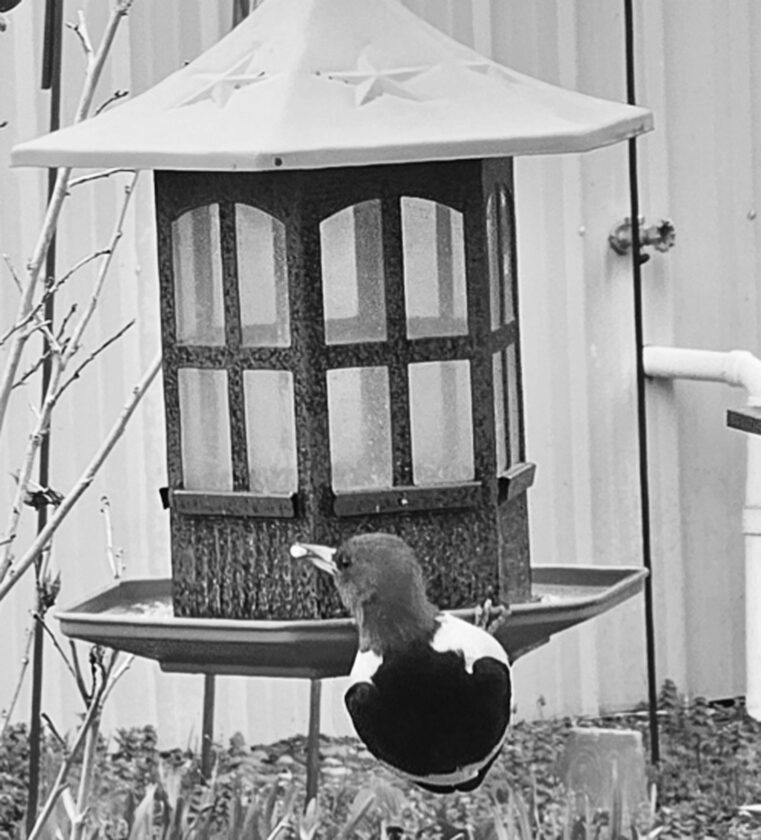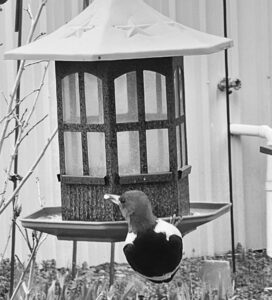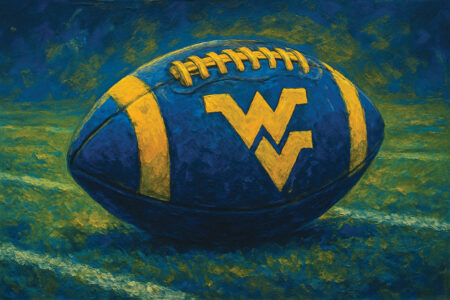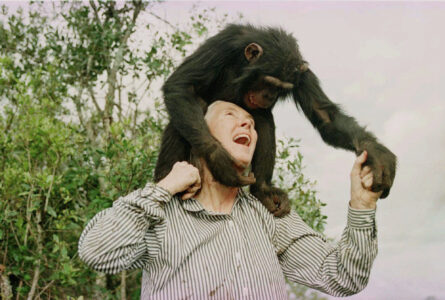Look Back: Signs of the changing seasons

A red-headed woodpecker clings on as it finishes cleaning out a feeder at our farm. (Photo by Bob Enoch)
CALENDAR, NOT WEATHER, PROCLAIMS WINTER TO BE NEARLY HERE.
It is winter on Prunty Avenue in Elizabeth; it is not particularly the cold weather that proclaims this; it is the date, December 9, that brings it to bear on leaf, man and the birds that fly upward.
The leaf is prostrate on the ground, with no more life or color than a brick wall; even huge rhubarb leaves that a few short weeks ago were rank and waiting the knife to change them into a fine fruit for the table, — these also are quickly becoming just a part of the organic matter of the good earth. The Maple sugar leaves that were before shining with tints of red blending down through every imaginable tint of pink and bright yellow and green, are fallen, and in most instances have been carried to add their bit to the leaf mold of the garden or lawn.
The main reason that man knows it is no longer summer or autumn is his change of raiment, from light to heavy; then, too, he sees the frozen ground sometimes covered with snow that was warm and usually dry as late as mid-October.
However, the birds by their very presence proclaim that there has been a change of season. The chickadee and crested titmouse may have been around all summer; but in warm and moderate weather, they were self-supporting. Any days now that the snow covers the ground, they are apt to be at your bird counter protestingly declaring: “Chickadee dee, chicka-dee;” “Kavy kavy, kavy kavy.” All of this translated into modern English would read: “There is no cracked nuts or beef fat on the bird counter. Our usual source of supply is cut off by the snow.”
The black-capped nuthatch and the downy woodpecker are in the same category also. They killed our destructive insects all summer, even boring into a decayed tree to find some of them. We did not see much of them in those merry days from May to November. Not one time did they ask for food from us. Now, if their notes could be read aright they are making it plain that a “hand out” will and would be acceptable.
The winter season is proclaimed more by the birds we do not see than by those we do see. Orioles, warblers, goldfinches, hummingbirds and many more are now missing. The purple martin simply did not show up one of those bright mornings in late August.
We cannot bring them back, but like our friends who have passed on, if we wait with gladness till next spring, in the time of resurrection, we will see them again. In the case of the meadow lark, robin and blue bird, this will be only a matter of two or possibly three months.
What we would fain do, if it were possible, would be to reproduce for your waiting imagination, the beauty of their colors, all of them, and the music, the exquisite loveliness of their song. Even the lowly son sparrow in summer and the crested titmouse in winter, make one glad with holy joy as they pour out in song, too soothing for words to describe.
From a collection of short stories by Art Ball
***
Bob Enoch is president of the Wood County Historical and Preservation Society. If you have comments or questions about Look Back items, please contact him at: roberteenoch@gmail.com, or by mail at WCHPS, PO Box 565, Parkersburg, WV 26102.






